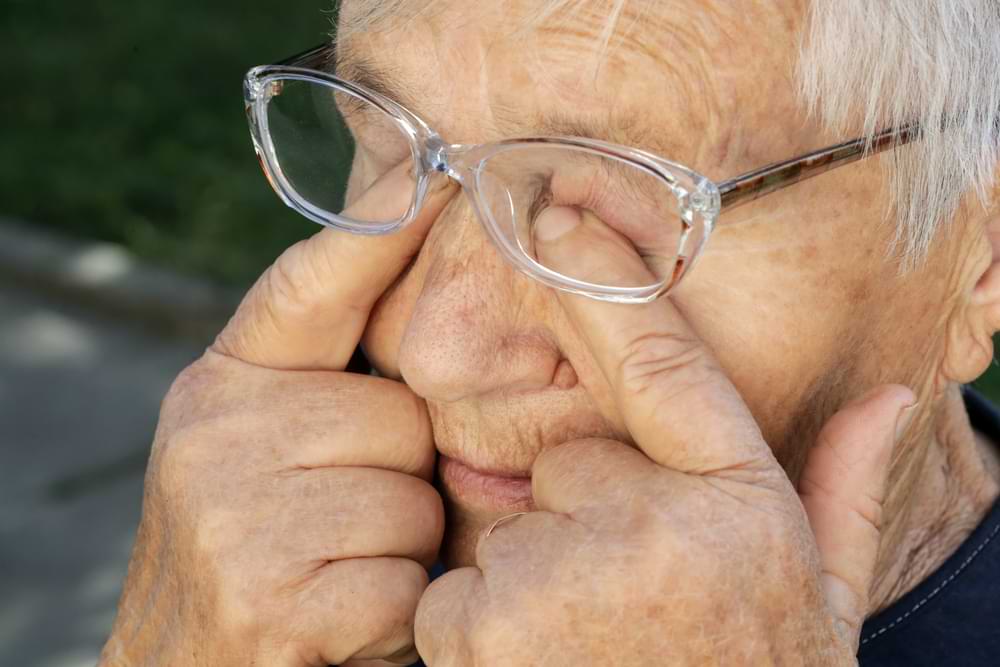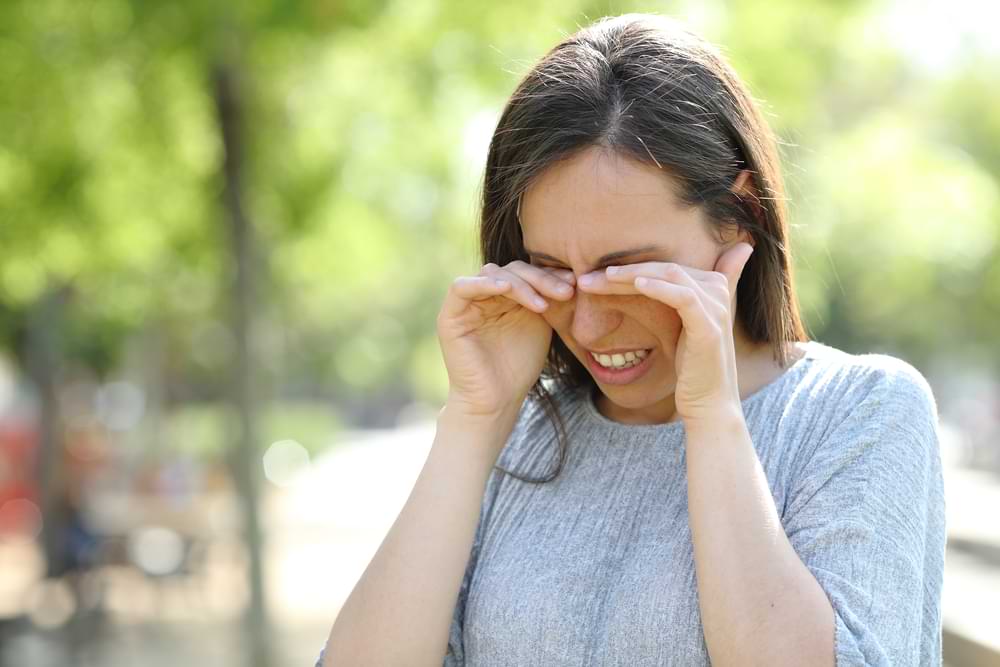Goodbye to Irritated Eyes: Discover Effective Dry Eye Treatment

Understanding dry eye disease is often the first step towards finding relief from itchy, irritated eyes. Many of my patients come in feeling frustrated by the persistent discomfort and impact which this has on their daily lives.
Dry eye syndrome occurs when the eyes don’t produce enough tears or the right quality of tears to stay moist. It’s a condition that can deeply affect your well-being, but with the right approach, it’s manageable.
There’s a common myth that dry eye is just a minor annoyance. But left untreated, dry eye can lead to more serious complications, including damage to the eye’s surface. That’s why it’s critical to take any signs of dry eye seriously and seek professional advice.
I’m Minh Tran, the principal optometrist at VisionPro, and I’ve dedicated much of my career to helping people overcome dry eye. Our practice is built on the belief that everyone deserves to see the world clearly and comfortably.
One story that stands out to me is of a patient, a woman in her 60’s who had been dealing with dry eye symptoms for years. She had almost accepted it as a part of aging until she came to us. After a thorough examination, we identified the underlying causes of her dry eyes and started a personalized treatment plan. The transformation in her symptoms was remarkable. She regained a quality of life she thought was lost.
If you’re experiencing any symptoms of dry eye, I encourage you to reach out. At VisionPro, we’re committed to providing compassionate, comprehensive care to help you say goodbye to irritated eyes. Book an appointment on our website or call us at our Footscray or St. Albans locations in Melbourne. Let’s work together towards clearer, more comfortable vision.
Or if your just curious to know more about dry eye treatment options, keep reading!
Understanding Dry Eye Disease
One of the key factors leading to dry eyes is the dysfunction of the meibomian glands. These glands produce the oily layer of the tear film, which prevents the rapid evaporation of tears and keeps the eyes moist. When these glands don’t function properly, it can result in the tears evaporating too quickly, leaving the eyes dry and irritated.
Many other things may contribute to dry eye symptoms.
- Environmental Conditions: Dry, windy, or smoke-filled environments can lead to tear evaporation, exacerbating dry eye symptoms. Using a humidifier and avoiding direct air flow from heaters, fans or air conditioners can help maintain eye moisture.
- Screen Use: Prolonged use of digital devices leads to reduced blinking, which is essential for spreading tears evenly across the eye surface. Taking regular breaks and practicing the 20-20-20 rule (looking 20 feet away for 20 seconds every 20 minutes) can mitigate this effect.
- Aging: As we age, hormone changes can lead to reduced efficiency of our meibomian glands, making dry eye syndrome more common in older adults. Regular eye exams can help manage this condition effectively.
- Contact Lens Wear: Long-term use of contact lenses can irritate the eyes and contribute to dryness. Opting for lens materials designed for high breathability and using re-wetting drops can alleviate discomfort.
- Medications: Certain medications, including antihistamines, decongestants, and some blood pressure drugs, can reduce tear production. Discussing these side effects with a healthcare provider can lead to alternative treatments that might be less drying to the eyes.
- Autoimmune Disorders: Conditions like Sjögren’s syndrome, rheumatoid arthritis, and lupus can affect tear production, leading to dry eyes. Collaborative care between optometrists and rheumatologists is crucial for managing these cases.
| 2023 Statistic | What it means |
|---|---|
| Over 700 million | People globally affected by Dry Eye Disease (DED) |
| More than 85% | Australians estimated to have experienced dry eye at some point |
| 55% | Australians who developed dry eye condition after the pandemic in 2020 |
| Almost 1 in 5 (18%) | Australians experience dry eye frequently |
Table data from https://www.insightnews.com.au/australia-dry-eye-disease-update-2023/
The Importance of Accurate Diagnosis
In our practices in Melbourne, eye exams are specifically designed to pinpoint conditions like dry eyes. We incorporate a variety of tests to ensure a comprehensive assessment.
One such test is the Schirmer Tear Test, which measures the eye’s ability to produce tears. By placing a thin strip of paper under the lower eyelid, we can observe the amount of moisture the eye produces in a set time, offering insight into tear production capabilities.
Another valuable tool is the Phenol Red Thread Test. This involves a small, phenol red-impregnated thread placed at the eye’s lower margin. The color change on the thread indicates the volume of tears, helping us understand the eye’s lubrication status.
These diagnostic methods allow us to accurately gauge dry eye severity and understand how well your eyes maintain moisture. With this detailed information, we can tailor a personalized treatment plan aimed at improving your eye health and ensuring lasting comfort.

Eye Drops: A Primary Solution for Dry Eye Relief
Artificial tears significantly mitigate dry eye symptoms by enhancing the natural tear film, ensuring eyes remain comfortably lubricated. Among the varieties available, preservative-free eye drops are particularly beneficial for individuals with sensitive eyes or those requiring frequent application, as they minimize potential irritation linked to preservatives.
Prescription eye drops offer another strategy of treatment, often formulated to address specific underlying causes of dry eye, such as inflammation, beyond mere lubrication. These drops may contain active ingredients not found in over-the-counter options, tailored to individual needs based on a thorough examination.
Over-the-counter (OTC) eye drops, accessible without a prescription, provide immediate relief for mild to moderate dry eye symptoms through lubrication. The choice between prescription and OTC eye drops depends on the severity of symptoms, frequency of use, and individual health considerations.
Like to know more about which over-the-counter (OTC) eye drop is right for you? Then you may like the following video from the Doctor Eye Health YouTube Channel.
Advanced Dry Eye Treatment: Meibomian Gland Expression
Meibomian Gland Dysfunction (MGD) is a prevalent issue causing dry eyes, linked to insufficient oil production in the tear film. At VisionPro, we address this with the meibomian gland expression procedure, aiming to unblock these glands and restore oil flow to the eyes.
This technique involves applying gentle pressure on the eyelids, which might sound daunting but is generally well-tolerated by patients. Most individuals report little to no discomfort during the process.
Before undergoing the procedure, patients might be advised to use warm compresses to soften the oil, making expression easier and more effective.
The frequency of treatments varies, depending on the severity of the condition and the patient’s response to the initial treatment. Some may see significant improvement after one session, while others might require follow-up treatments.
Other Dry Eye Treatments and Procedures
Beyond the previously discussed treatments, there are additional strategies for alleviating dry eye.
- Punctal Plugs: These are tiny devices inserted into the tear ducts to prevent tear outflow, thereby increasing the eye’s moisture level. This method is particularly beneficial for those whose dry eye symptoms stem from inadequate tear retention, offering a straightforward solution to enhance eye comfort. We can refer you to an ophthalmologist if necessary.
- Lacrisert: This is a small, rod-shaped insert placed under the lower eyelid, where it slowly releases a lubricating solution throughout the day. Lacrisert provides continuous moisture to the eye’s surface, ideal for those with moderate to severe dry eye symptoms looking for lasting relief without frequent eye drop application.
- Lifestyle adjustments: Limiting screen time, using humidifiers to moisten the air, and wearing sunglasses outdoors to shield eyes from wind and UV rays are beneficial.
Why Choose VisionPro?
At VisionPro, our experience in dry eye treatment sets us apart from more “high-volume” optometry practices. We understand that dry eyes can significantly impact daily life, and we’re dedicated to providing personalized care. Our approach starts with a thorough assessment to pinpoint the specific causes of your symptoms.
We recognize that each patient’s situation is unique, and there’s no one-size-fits-all solution. That’s why we tailor our treatment plans, considering factors like tear quality, environmental influences, and lifestyle habits. Our optometrists are skilled in a range of treatments, from advanced eye drops to meibomian gland expressions, ensuring we target the root of the problem.
And our commitment goes beyond initial treatment. We believe in the importance of ongoing care and adjustments to the treatment plan as needed. This ensures that our patients not only find relief from their symptoms but also enjoy long-term improvements in their eye health and quality of life.
Frequently Asked Questions
Can dry eyes cause blindness?
While dry eyes can cause discomfort and affect vision quality, it’s unlikely to lead to blindness. However, severe untreated cases can cause complications that might affect sight.
Is there a way to cure dry eyes permanently?
There’s no universal cure for dry eyes, as treatments often focus on managing symptoms. The effectiveness depends on the underlying cause and individual response to treatment.
Can dry eyes go away by itself?
In some cases, dry eyes may improve on their own, especially if caused by temporary factors like environmental irritants. However, persistent dry eye syndrome typically requires intervention.
Can drinking more water reduce dry eye symptoms?
Staying well-hydrated can help alleviate dry eye symptoms by supporting overall hydration, including the eyes, but it’s often just one component of a comprehensive treatment plan.
Does poor sleep quality cause dry eyes?
Yes, poor sleep quality can contribute to dry eye symptoms by not allowing the eyes to rest and rejuvenate properly, leading to insufficient tear production or increased tear evaporation.
Conclusion
In this article we’ve taken a closer look at dry eye syndrome and stressed the need for treatments that truly match your individual needs. Eye drops, artificial tears and meibomian gland expression can all be effective ways to manage those annoying symptoms and give your eye health a boost.
VisionPro has deep experience in creating personalized care plans to alleviate dry eye discomfort and restore your eye health.
Scheduling an eye exam appointment is the first step to restoring or maintaining quality of life.
Click on the “BOOK AN APPOINTMENT” button OR call either our St. Albans (03) 9364 5509 or Footscray ((03) 9687 8787 optometry practices.

Minh gained his Bachelor of Optometry in 2000, and his Certificate in Ocular Therapeutics (ACO) in 2016.
He started VisionPro Optometrists in 2008 and has been Principal Optometrist ever since, working in both the Footscray and the St Albans practices.
Minh is a member of Optometrist Association Australia and the ACO. He always strives to achieve the highest standard of professionalism when delivering eyecare to all his patients.
Minh’s special areas of interest include ocular diseases and management, children’s vision and contact lens fitting. Minh enjoys travelling and reading in his spare time.
